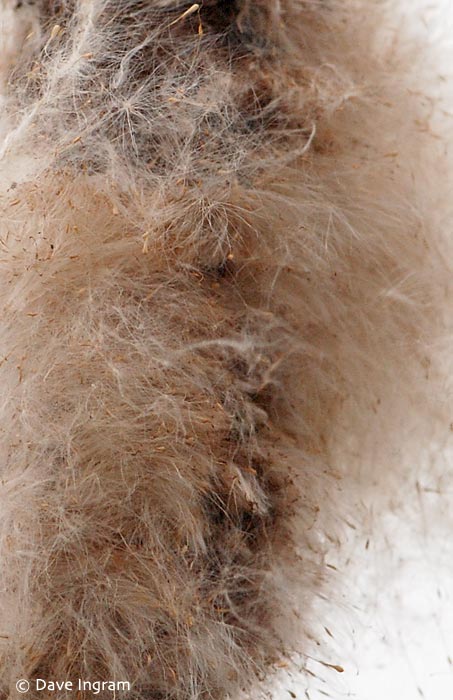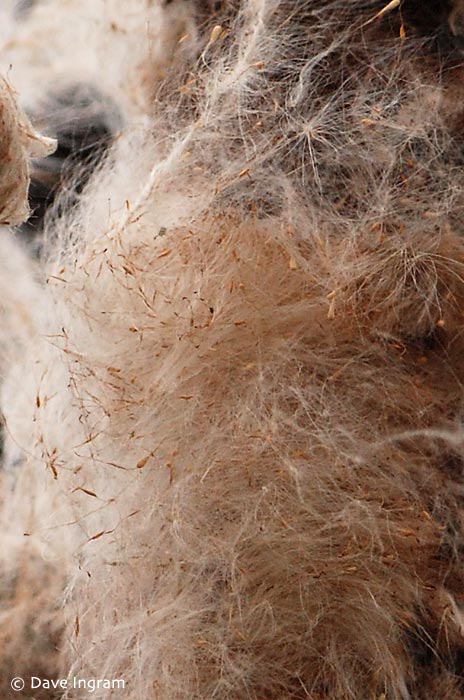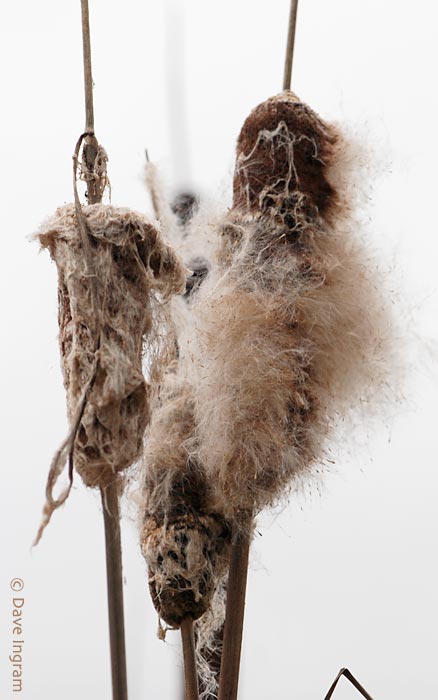One of the things that impressed me at Buttertubs Marsh last week was the endless stretches of Cattail (Typha latifolia). At this time of year, the leaves of this plant are a pale brown – new green leaves will emerge in the spring. The flowers, which we generally see as a brown “hot-dog” shape on the end of a stalk were in the process of disintegrating. Some still retained their form, while others were pulled apart and starting to release seeds.
Male and Female Flowers
I’m sure that many of us have childhood memories (or in my case, from last week) of pulling apart a cattail and letting the seeds go in the wind. Cattail spikes consist of both male and female flowers. The female flowers are at the bottom of the spike and they are what forms the firm brown “cat’s tail.” Wind plays an important role in the dispersal of the nutlets and long slender hairs on the seeds serve to loft them into the air. The 1 mm long nutlets also float so seeds can be dispersed by both wind and water.
A Useful Plant
Cattail provides excellent habitat for birds like Marsh Wrens and Red-winged Blackbird (both of which I saw at Buttertubs on that day) and food for a number of mammals including Muskrat. The thick starchy rhizomes are edible and can be made into a flour. I remember eating one raw in Boy Scouts as part of a survival food demonstration. The young green shoots are edible raw or steamed and the pollen can be ground into flour. A versatile plant, the long narrow leaves were woven by many coastal First Nations peoples into mats, capes, hats, blankets and bags. The seed fluff was used to stuff pillows, dressing wounds and spun with dog’s wool into blankets. The fluff was also used as an absorbent material for diapers. Good to know if you’ve got two young children who are still in diapers!
Before rushing out this spring to harvest the cattails in your local marsh, take a couple of things into consideration. The young leaves of Yellow Iris (Iris pseudacorus) look similar to those of young Cattail. The rhizomes of Yellow Iris are toxic.
Cattails are an Important Wetland Plant
Also consider where you’re harvesting. Cattails have been used extensively as a form of phytoremediation, and accumulate a variety of pollutants in their tissues. In that sense they’re great to have around because they can remove pollutants like arsenic, phosphorus, and even pharmaceuticals. Not so good if you’re eating one that has concentrated these toxins.
Finally, wetlands are sensitive ecosystems and cattails are an important part of that ecosystem. Over harvesting could seriously damage a fragile environment and where would that leave the creatures of the marsh? Perhaps it’s just best to enjoy Cattails as they are.
If you’re interested in exploring the world in more detail consider the close-up perspectives presented by Macro Monday.



